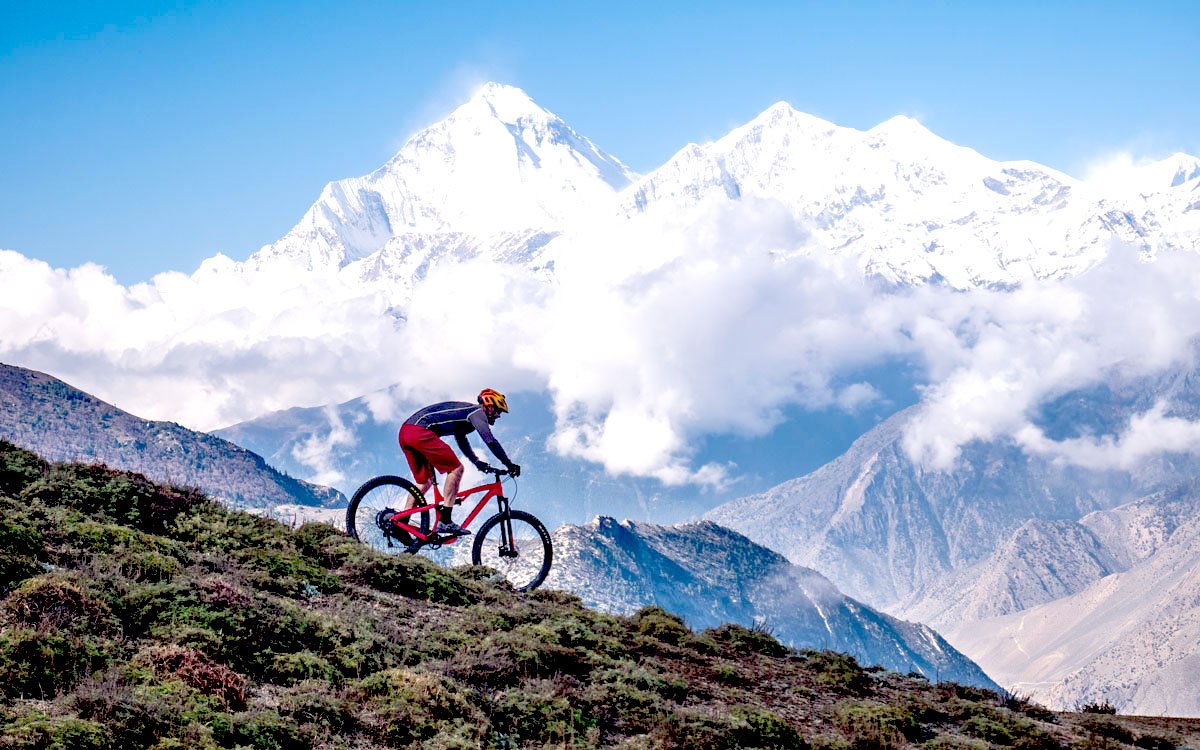Mountain biking has evolved from a niche sport into a global phenomenon, attracting adventurers seeking adrenaline-fueled experiences in breathtaking landscapes. Among these, the Himalayas stand as a pinnacle for enthusiasts, offering a blend of rugged terrain, cultural richness, and unparalleled natural beauty. This article explores the diverse trails and experiences awaiting mountain bikers in the majestic Himalayan range.
Section 1: Overview of the Himalayas
Spanning over 2,400 kilometers across five countries—India, Nepal, Bhutan, China (Tibet), and Pakistan—the Himalayas boast the world’s highest peaks, including Mount Everest. This vast region is not only a geological marvel but also a cradle of diverse cultures, with each country offering its own unique blend of traditions, languages, and histories. From the verdant valleys of Nepal to the stark beauty of Ladakh in India, the Himalayas promise an unmatched backdrop for mountain biking adventures.
Section 2: Types of Mountain Biking Trails
Mountain biking trails in the Himalayas vary widely in difficulty and terrain type. Cross-country trails wind through alpine meadows and dense forests, offering bikers a chance to explore remote landscapes. Downhill trails challenge riders with steep descents and technical obstacles, while singletrack paths weave through narrow mountain passes, providing thrilling rides amidst breathtaking scenery. Each type of trail presents its own set of challenges and rewards, making the Himalayas a playground for bikers of all skill levels.
Section 3: Popular Regions and Trails
The Himalayas are dotted with iconic biking destinations, each offering a distinct experience. Ladakh, known as “Little Tibet,” boasts high-altitude trails such as the renowned Khardung La Pass, which sits at over 5,300 meters above sea level and offers panoramic views of snow-capped peaks. Nepal’s Annapurna Circuit is revered for its challenging terrain and cultural immersion, as bikers navigate through remote villages and lush valleys surrounded by towering Himalayan giants. Bhutan’s Paro Valley, with its serene landscapes and ancient monasteries, provides a tranquil yet exhilarating biking experience.
Section 4: Trail Difficulty and Accessibility
Navigating the Himalayan trails requires an understanding of the grading systems used to assess difficulty levels. Trails are categorized based on factors such as elevation gain, technical features, and endurance requirements. Accessibility to these trails varies by region and season, with some areas accessible only during specific months due to weather conditions or cultural festivals. Planning ahead and consulting local guides can ensure a safe and rewarding biking experience in this rugged terrain.
Section 5: Biking Season and Weather Considerations
Choosing the right time to visit the Himalayas is crucial for a successful biking expedition. The region experiences distinct seasons, with summer (May to September) offering warmer temperatures and clearer skies ideal for high-altitude biking. However, monsoon rains can make trails muddy and challenging to navigate. Autumn (October to November) and spring (March to April) provide cooler temperatures and stable weather, making them popular seasons for biking enthusiasts seeking optimal trail conditions and stunning mountain views.
Section 6: Cultural and Ecological Impact
As mountain biking gains popularity in the Himalayas, it is essential to consider its impact on local cultures and ecosystems. Many trails pass through sacred sites, traditional villages, and fragile environments that require careful stewardship. Responsible biking practices, such as respecting local customs, minimizing waste, and supporting sustainable tourism initiatives, are crucial to preserving the cultural heritage and natural beauty of the Himalayan region for future generations.
Section 7: Gear and Preparation
Preparing for a mountain biking adventure in the Himalayas requires specialized gear and physical conditioning. Essential equipment includes sturdy bikes capable of handling rough terrain, protective gear such as helmets and knee pads, and clothing suitable for varying weather conditions. Acclimatization to high altitudes is also necessary, with gradual ascents and adequate hydration playing key roles in preventing altitude-related illnesses. Consulting with experienced guides and packing essential supplies ensures bikers are well-prepared for the challenges ahead.
Section 8: Safety Considerations
Safety is paramount when biking in the Himalayas, where rugged terrain and remote locations present unique challenges. Bikers should prioritize health and safety measures, including carrying first aid kits, communicating travel plans with trusted contacts, and being aware of potential hazards such as landslides and wildlife encounters. Access to emergency services may be limited in some areas, making self-sufficiency and preparedness essential for a safe and enjoyable biking experience.
Section 9: Personal Experiences and Stories
Behind the technical details and practical considerations lie the personal stories and experiences that define mountain biking in the Himalayas. Interviews with seasoned bikers reveal tales of triumph and camaraderie amidst breathtaking landscapes. From conquering challenging trails to forging lasting connections with local communities, these narratives capture the spirit of adventure and exploration that draws bikers to the Himalayas year after year.
The Himalayas remain a premier destination for mountain biking enthusiasts seeking unparalleled adventures in a spectacular setting. From thrilling descents to cultural discoveries, the region offers a wealth of experiences that cater to bikers of all interests and skill levels. By embracing responsible tourism practices and respecting the region’s natural and cultural heritage, bikers can contribute to preserving the Himalayan beauty for future generations to enjoy.
Additional Tips
Enhancing the article with stunning visuals, detailed maps, and practical information such as accommodation options and local guides further enriches the reader’s understanding and planning process. By immersing themselves in the allure of the Himalayas through this comprehensive guide, readers are inspired to embark on their own mountain biking journey of a lifetime.
Would you like to explore any specific aspect of this expanded outline further?





